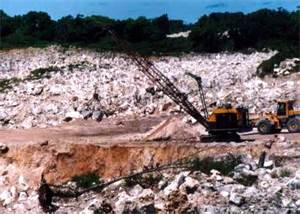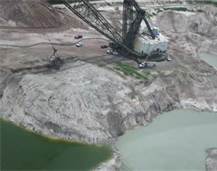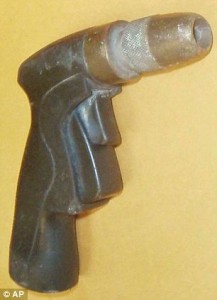![occasionalbanner300[1]](https://ymlp.com/https.php?id=purewatergazette.net/blog/wp-content/uploads/2013/04/occasionalbanner3001.gif)
In this mid-summer Occasional, you'll hear about Mosaic, Swiftmud, Alamo Water, Nema 6, flexible faucet risers, and phosphate mining. Learn the sphericity of anthracite, the water requirements of taverns, and where the Rodriguez family lives. EPDM, SDI, TDS, NOAA, PSI, and DO. Hear about Jordan's massive water project, raw sewage in the Hudson, and a new thriller about water treatment plant monsters. You'll learn about the water footprint of spying, building a glacier, and the perils of aiming a water hose nozzle at the police. And, as always, there is much, much more.
The Pure Water Occasional is a weekly email magazine produced by Pure Water Products of Denton, Texas. We also publish the Pure Water Gazette, which puts up new articles about water and water treatment daily, providing “vast piles of information in the Gazette’s tangy, irreverent style” (Detroit Sun). We also invite you to visit PureWaterProducts.com, the most information-rich commercial water treatment site on the worldwide web.
If you would like to read this issue on the Pure Water Gazette’s website, please go here.
While you were watching the summer fly by, a lot of interesting things happened in the ever-changing world of water. Read on to hear about some of them.
New From the Pure Water Gazette:
Phosphate giant Mosaic pumps from Florida’s aquifer to dilute its pollution
by Craig Pittman
Although this is hard to believe, some mining companies are allowed to pump millions of gallons of fresh water from aquifers to dilute polluted wastewater from mining operations so it can be dumped into creeks without violating state regulations. Florida’s Mosaic, the world’s largest phosphate mining company, is permitted to pull 70,000,000 gallons per day from 250 wells in an area that has no water to waste. -- Hardly Waite.


Source: Tampa Bay Times.
The article below is recycled from a previous Occasional:
The Ceiling is Up and the Floor is Down
by Gene Franks
A Rare Pure Water Occasional Book Review
Editor’s Note: This article first appeared in the Pure Water Occasional for May 2010. –Hardly Waite.
As a foreign language student in college, long, long ago, I was impressed by the really important information you could get from foreign language textbooks. There were practice sentences that provided useful information like “The Rodriguez family is Mexican. They live in a Mexican house.” My all-time favorite was, “The ceiling is up and the floor is down.” That’s a bit of wisdom I have taken through life and have been able to apply to every building I ever entered.
Now that I mainly study water filtration equipment, there are two books, both written in English, that help me a lot. I use each of them almost every day. They are the Entingh Corporation’s Engineering Handbook and Alamo Water’s Water Improvement Engineering Guide.
The last mentioned was published by Alamo Water Refiners of San Antonio (the copyright date of my copy is 1991, but I have a feeling it goes back further). Alamo Water is now part of Watts Water Quality and Conditioning Products, but the AlamoEngineering Guide lives on. It is a 47-page fine print treasury of very useful information.
Here are some universal truths from the Alamo guide, so helpful they’re worthy of inclusion in foreign language textbooks:
If you want to avoid water hammer (and who doesn’t?), the size of your pressure tank should be limited to the maximum GPM (gallons per minute) divided by 60 seconds times 2 seconds times 10.
My God! The sphericity of anthracite is 0.61 in loose pack format.
If you want to install electrical equipment in a manhole, quarry or mine, submerged in water, you must conform to Nema 6 Electrical Enclosure Standards.
To use Birm to remove iron from water, the water’s Dissolved Oxygen (DO) content must be equal to at least 15% of the iron (or iron and manganese) content.
The sphericity of anthracite is 0.61 in loose pack format and 0.60 in tight pack.
When sizing a treatment system for a motel with 50 units, you should allow for 145 gallon per minute flow during peak demand if your toilets have flush valves. With flush tank toilets, 75 gallons per minute is enough.
For bowling alleys, you should plan for 175 gallons daily usage per lane.
If sizing a water system for an oil refinery, allow 80,000 gallons of water per day per 100 barrels of crude processed.
For taverns, plan on 20 gallons per day per seat.
A 2″ pipe will support a normal water flow of 65 gallons per minute but you can push up to 120 gallons per minute through it if you have to.
Barber shops need 55 gallons of water per day per chair.
Water boils at 212 degrees F. at 0 PSI pressure, but at 52 PSI it boils at 300 degrees F.
In dealing with boilers, you can convert pounds of steam per hour to horsepower by dividing it by 34.5.
Moderately hard water is defined as water with 3.5 to 7.0 grains per gallon hardness.
A 10″ X 54″ mineral tank (a common size) holds 1.5 cubic feet of filter medium or softener resin. It has a square foot media surface of 0.54 square feet, holds 0.45 cubic feet per inch of height, is 50″ tall to the sideshell, has a media bed depth of 34″ and a freeboard (empty space on top) of 16″. It supports a softener flow rate of 5.0 gallons per minute and a filter flow rate of 2.7. As a softener tank, it has as 45,000 grain capacity if salted at 22 lbs. per regeneration and 30,000 grains if salted at 9.
Manways on top of steel tanks can be davited?
A 30″ X 72″ mineral tank requires a gravel underbed of 200 lbs. of 1/4″ X 1/8″ gravel to support carbon filter media.
A circular brine tank, 20″ in diameter, holds 1.33 gallons of brine per inch of height.
The maximum operating temperature for Filter Ag is 140 degrees F.
Filox is effective between pH 5.0 and 9.0.
Weak acid cation resin is best at reducing alkalinity.
Vaseline or common grease should not be used on softener control valves.
The diameter of a human hair is about 75 microns.
The smallest bacteria measure about 0.2 microns.
It is advisable to feed a dealkalizer with softened water.
A cylindrical tank 3′ 2″ in diameter holds 58.92 gallons of water per foot of depth.
Manways on top of steel tanks can be either elliptical, flanged, davited, or hinged.
One of the popular manway styles is called a thief hatch.
Ductile iron has the strength properties of steel using casting techniques similar those of gray iron.
EPDM is made from ethylene-propylene diene monomer. It has exceptionally good weather aging and ozone resistance and is fairly good with ketones and alcohols.
A check valve installed near a pump in the discharge line will keep the line full and help prevent excessive water hammer during pump startup.
PVC has an excellent chemical resistance when used with fatty acids, but poly tubing is not recommended.
One gallon of muratic acid is equal in treatment capacity to 3.2 lbs. of hydrochloric acid.
One pound of polyphosphate typically treats 40,000 gallons of water at a 2 ppm concentration, but it is a good idea to slug the system initially at 10 ppm for 30 days to clean out the lines at a faster rate.
It takes 2 to 3 ppm chlorine with 30 minutes residence time to oxidize one ppm H2S.
One oz of calcium hypochlorite equals two level tablespoons.
To calculate the percentage rejection rate of a reverse osmosis unit subtract the product TDS from from the feedwater TDS, multiply by 100, then divide by the feedwater TDS.
SDI stands for Silt Density Index and it is a measurement of suspended solids in RO feedwater.
Watts divided by amps equals volts.
A gallon of water weighs 8.337 pounds.
To figure the gallon capacity of a reservoir, multiply the length by the width by the depth in feet. This gives the cubic foot total. To convert to gallons, multiply the cubic feet by 7.4805.
I could go on and on and on and on. The Alamo Water Improvement Engineering Guide has a million of them.
Here are the new articles that appeared this week in the Pure Water Gazette:
Getting Water to Undersink Water Filters and Reverse Osmosis Units by Gene Franks
The recent rise in popularity of flexible hoses to connect sink faucets has made undersink water filter installation a lot easier. The convenient flexible connectors have replaced rigid copper tubing as the connectors of choice.
Jordan's Huge New Water Project.
Jordan, one of the world’s 10 driest countries, just completed a billion dollar project to pump water from a 300,000-year-old southern aquifer. Although the water is tainted with 20 times the safe amount of radiation, the pressing need for water is causing the government to put aside health concerns. Having half a million Syrian refugees in the country has obviously made the water situation more intense.
A Server, A Spy, and a Water Footprint by Elizabeth Cutright
The Iceman Cometh: If the climate takes your glacier away, why not build another?
To keep you abreast of the very latest in water information, we offer the following recipe from The Economist for do-it-yourself glacier building. If it works in India, it should work in Las Vegas. What the world needs is more artificial glaciers.
2013 Hypoxia Zone Is Expected to Approach 9,000 Square Miles
CORPUS CHRISTI, Texas – The Gulf of Mexico may be far from the corn fields of the Midwest, but it’s those fields that are causing a big problem for the gulf coast water this year. The National Oceanic and Atmospheric Administration (NOAA) predicts a record-size “dead zone” in the Gulf this summer, stretching from South Texas all the way to Alabama.
News Items from the World of Water
Researchers have found antibiotic-resistant strains of disease-causing bacteria living in some near-shore segments of the Hudson River from the Tappan Zee Bridge to lower Manhattan, largely connected with raw sewage dumped into the river. The locations with heavy concentrations of the antibiotic-resistant bacteria also had high numbers of certain bacteria that indicate the presence of raw sewage in the water. Full Story.
Police in Long Beach, CA killed a man who pointed a pistol-shaped water hose nozzle in their direction. Full story.
There isn’t a lot of modern fiction about the water treatment business, so you should know about Dodge Winston’s The Water Treatment Plant. Its author, a former water treatment worker, has written a gripping account of life in the sewer. In the novel, a horrific monster emerges after a freak rainstorm, terrorizing the employees at the wastewater plant and even snuffing out a life or two in the facility’s bathroom (Never pee alone!). The book includes a map of the plant “so readers can follow the suspense and action,” Full book review from the Grist.
National Guarden Hose Day is right around the corner.



